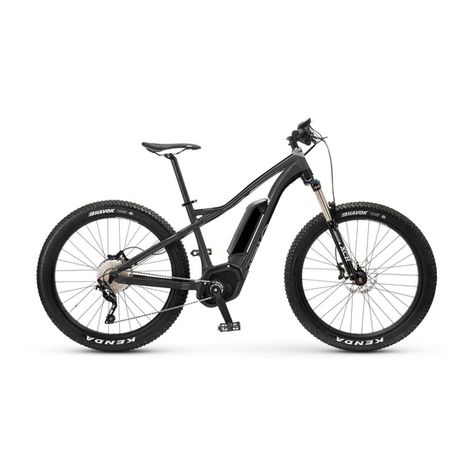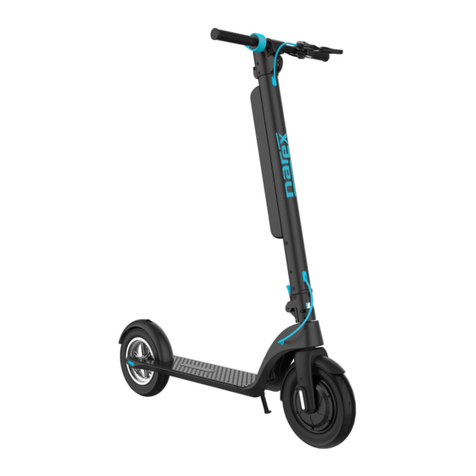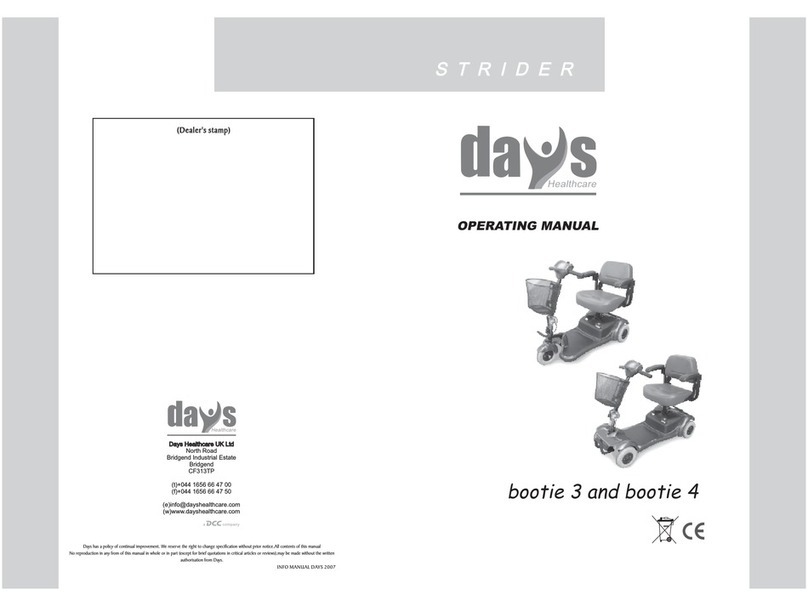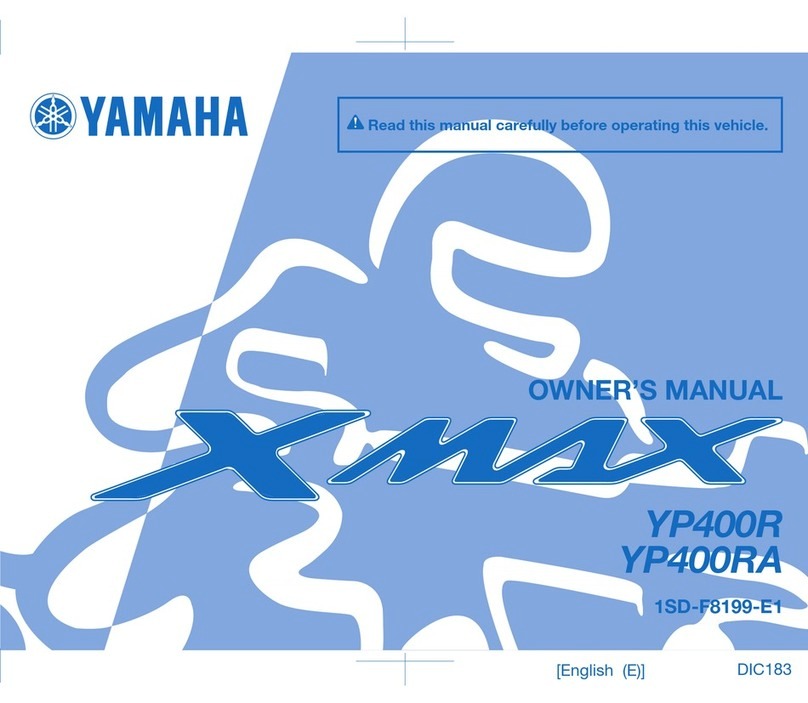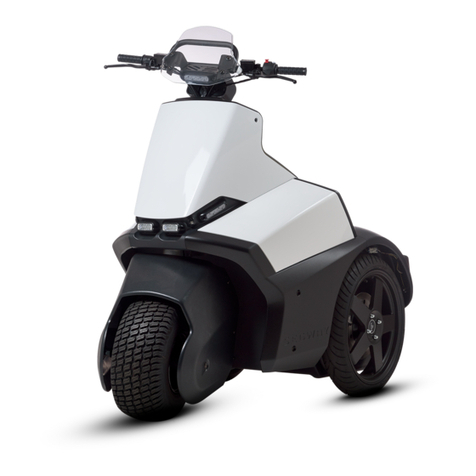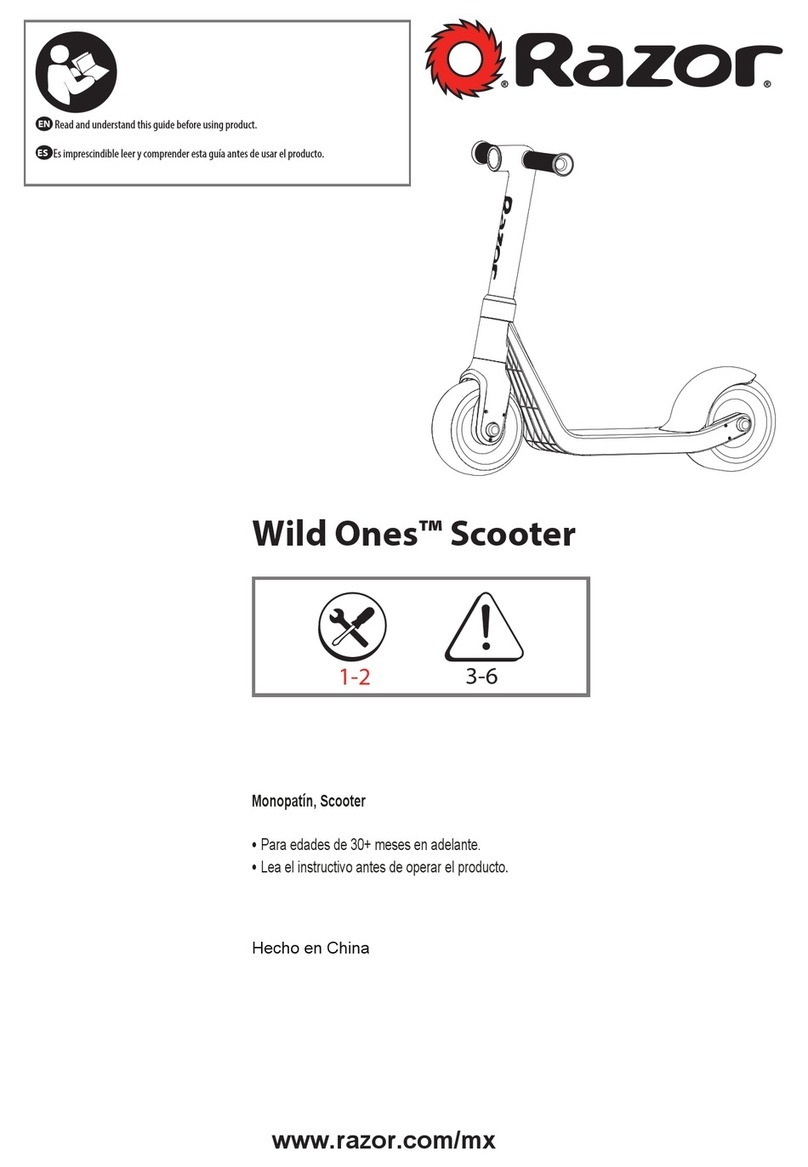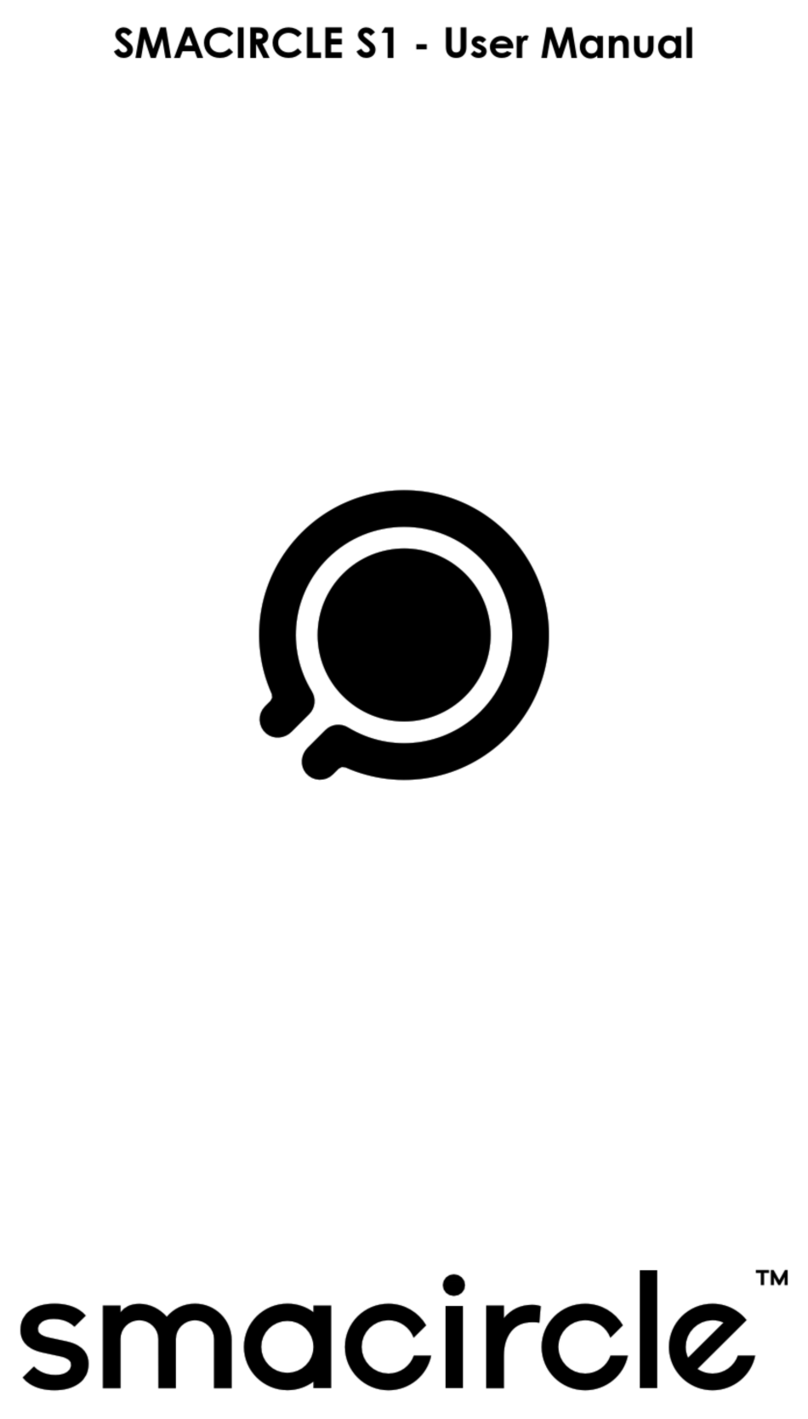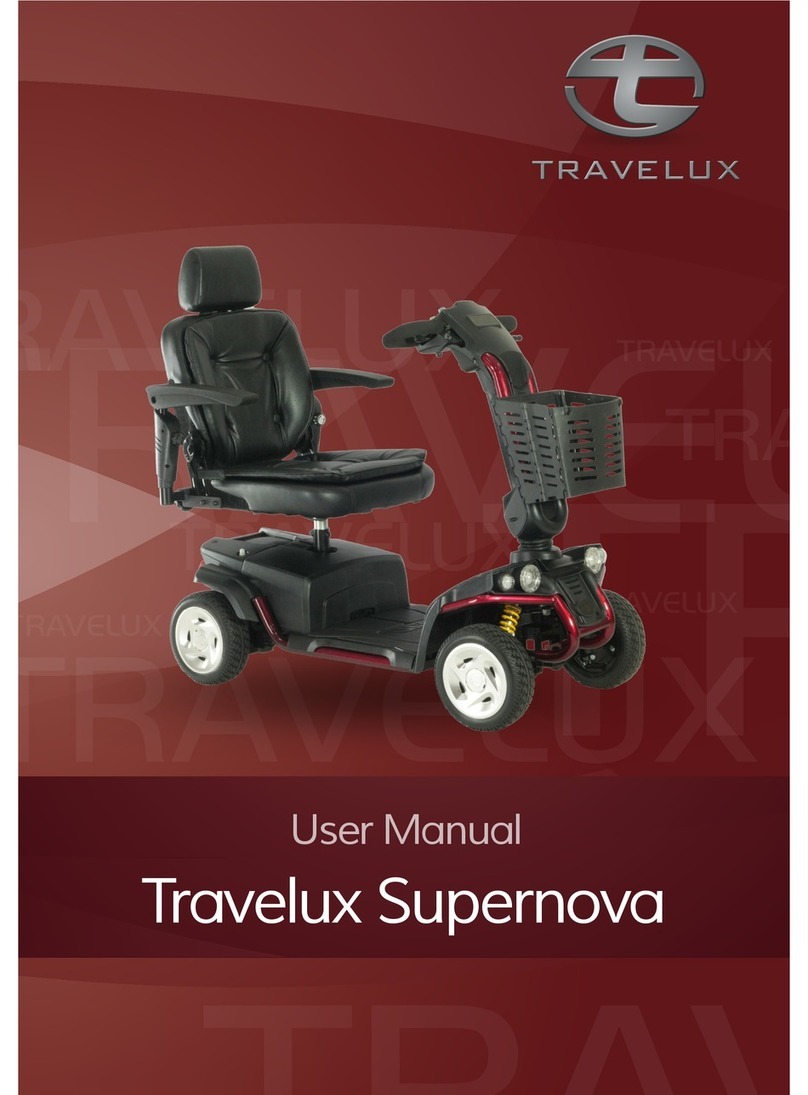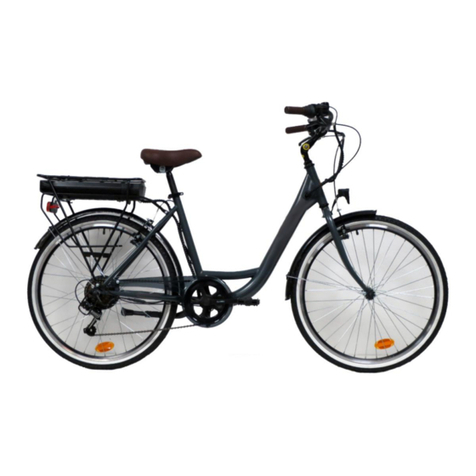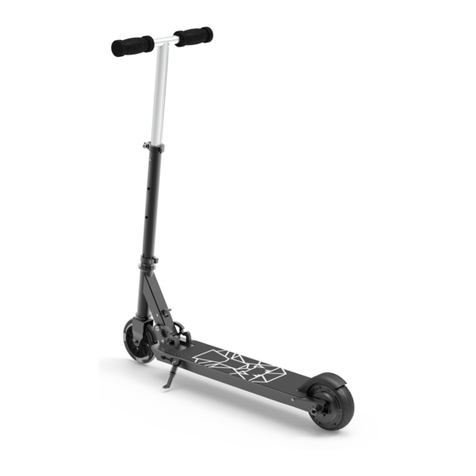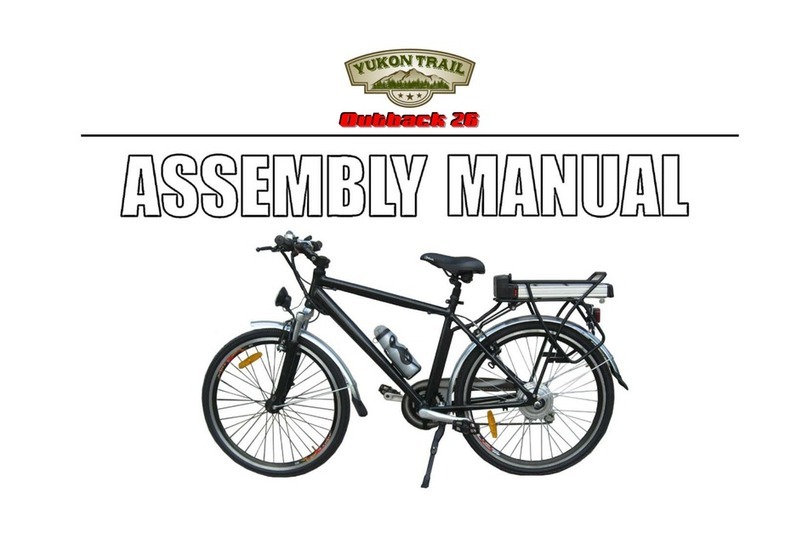Ecobike Basic Black User manual

USER
MANUAL
ELECTRIC BIKE

OBJECT OF DECLARATION
CONFORMITY WITH EU DIRECTIVES
AND STANDARDS
Wrocław, Poland 1.01.2022
The manufacturer EcoBike Sp. z o.o., Osiniecka 108, 54-530 Wrocław, Poland
hereby declares that the object of declaration conforms to the EU directives and
standards listed below. Technical documentation is available directly under the
manufacturer’s address.
5903317863359
5903317865216
5903317865223
5903317864752
5903317864769
5903317864776
5903317865247
5903317865230
5903317865254
5903317863496
5903317863472
5903317865179
5903317865186
5903317865292
5903317865476
5903317865469
5903317865193
5903317865209
5903317865308
5903317865483
5903317865285
5903317865933
5903317865940
5903317862482
5903317862499
5903317862505
5903317865612
5903317865629
5903317865162
5903317863311
5903317865148
5903317860761
5903317860846
5903317865155
5903317861836
5903317865278
5903317865261
5903317861836
5903317861843
5903317861850
5903317863502
Basic Black
Basic Nexus White
Basic Nexus Blue
D1 Trekking
D2 City Menthol
D2 City Black
Even Black
Even White
Even Ocean Blue
Forest
Urban
LX 19
LX 21
LX 300
LX 500 17 Mint
LX 500 19 Palm Blue
MX 20
MX 23
MX 300
MX 500
Rhino
RX 500 19
RX 500 21
SX3
SX4
SX5
SX 300 18 Sandstorm
SX 300 20 Cool Gray
Traffic 26 Beige
Traffic 26 Navy Blue
Traffic 28 Mint
Traffic 28 White
Traffic 28 Black
Traffic 28 Blue
Traffic 28 M Black
X-City 19 Coffee
X-City 17 Cappuccino
X-Cross M
X-Cross L White
X-Cross L Black
Cargo
2006/42/WE
2014/30/UE
2014/35/UE
2011/65/UE
2001/95/WE
PN EN 15194:2018
PN EN
ISO 4210-2:2015
Machinery
Electromagnetic compatibility
Low voltage
Restriction of the use of certain hazardous substances in
electrical and electronic equipment (RoHS)
General product safety
Cycles - Electrically power assisted cycles - EPAC Bicycles
Cycles — Safety requirements for bicycles — Part
2: Requirements for city and trekking, young adult,
mountain and racing bicycles
EAN EAN
Electric bicycles ECOBIKE
Model name Model name
EU Declaration of conformity
2022 / 2023
Year of manufacture

3
Correct usage of the bike and its electrical motor helps extend
the battery’s lifespan and range, ensuring your safety during
the ride. In case of a malfunction, please immediately consult an
authorised service.
Any attempt to repair or modify the bike may void the warranty
and/or make your e-bike unsafe to ride. Therefore, bicycle repairs
should exclusively be carried out by authorised repair personnel.
Misuse of the bike may be dangerous and lead to harm or even
death. If you are unsure whether your bike model matches the
terrain that you would like to traverse (whether it be a mountain
trek, city riding, or other), please ask the seller whether the
specific model is appropriate for you.
The e-bike contains electric parts deemed environmentally
hazardous by the law regulations. The product must therefore be
appropriately disposed. Placing electric waste in a domestic trash
bin potentially harms the environment and is prohibited by law
under fines.
Introduction
Important
notice
Thank you for purchasing Ecobike product. We have designed
and manufactured our e-bikes in compliance with the highest
international standards. We want to ensure that riding your
bike is enjoyable and helps improve your health and well-being.
Before riding your bicycle, please carefully read the user’s manual.
It contains important information related to safety, handling and
service.

• We recommend using a
bicycle helmet that meets
safety requirements and
standards
• You shall always follow the
road traffic and vehicle usage
regulations. The relevant law
in Poland is the Traffic Code
(Kodeks Drogowy).
• Please remain attentive
during the ride, particularly
under heavy traffic
• Only one person should
ride the bike at any time.
An exception to this rule is
travelling with a child in a
certified bike seat. Make sure
that the total weight of the
rider and the child is within
the bike’s maximum load
• Never ride a bike under the
influence of alcohol and/or
other intoxicating substances!
• Make sure you are visible on
the road. The bike should be
equipped with front and rear
lights or reflectors. Reflectors
(or reflective strips) should
also be placed on both the
front and rear wheels
• Be careful when riding on
wet or slippery surfaces,
such as after the rain. Under
such conditions, the braking
distance is significantly
extended
• Avoid braking suddenly
• Grip the handlebars with
both hands during the ride
• Do not grab hold cars or
other vehicles
• If your clothing has hanging
parts or is otherwise loose,
make sure that it will not
come in contact with any
moving parts of the bike
(the chain, the wheels or the
crankset)
• We suggest repairing and
maintaining in dedicated bike
repair shops. Performing a
regular service of your bike
will ensure your safety and
prolong the bike’s lifespan
• Do not repair the electric
parts of the bike yourself.
Bring it to an authorised
service provider instead
• Always use a soft, non-
abrasive cloth to wipe your
bike. Heavily soiled areas
may be cleaned with a mild
detergent
• To comply with Polish
Traffic Law, when you
use your bicycle on public
roads, the bike has to be
equipped with the following
accessories: front and rear
lights or reflectors, a bell, and
reflectors on both pedals and
wheels’ spokes
Safety rules

5
• Acquaint themselves with the user’s manual and instruct the child
regarding the bike’s basic operating principles and safety features
• Confirm that during the ride the child correctly wears a strapped
bicycle helmet and understands all the safety rules
• Pay special attention to safety when carrying the child in a bike
seat
• We designed Ecobike bicycles for recreational use. Therefore,
they are intended for neither professional sports nor extreme
circumstances such as downhill riding, hazardous terrain, etc.
• The maximum load of the bike is 120 kg. For Ecobike Cargo
model, the maximum load is 155 kg. Do not exceed the carrying
capacity of the bicycle
• Store both the bicycle and the battery in a dry place where the
temperature does not drop below 0 °C (32 °F). Do not expose
the bike or the battery to excessive humidity
• Store the bicycle away from corrosive chemicals (pesticides,
acids, solvents, etc.) and salty liquids
• Do not ride the bike under heavy weather conditions. Heavy
rain may damage the motor or the battery.
Correct use and storage
Information for parents and guardians
Parents or legal guardians are responsible for the safety and correct
road behaviour of their children. Instruct the children regarding
the correct use of the bike before they mount it. In particular, the
parents are obliged to do the following:

6
Before the ride
• Tire pressure is within limits - tire manufacturers include
the required pressure information on the side of the tire
• Tires’ condition is good - check that there are no
deformations or cracks and that the tires are well aligned
to the rim and do not bulge out
• The wheels are attached firmly to the bike
• The handlebar and its stem are aligned, and do not feel
loose or turn on their own
• The seat is fixed firmly to the frame and does not rotate
or sag under the rider’s weight
• Both the front and rear lights are working correctly
• The bell is in working condition
• If your bike has V-brakes, check that the safety groove on
the side of the wheel rim is clearly visible. If it is not, the
rim must be replaced
• Both the front and rear brakes are working correct
Before each ride, inspect the technical condition of your bike.
Most importantly, you should check the following:
Preparing your bike for the first ride
Unpack your bike and accessories from the cardboard container.
Pay special care while unpacking to not scratch the bike frame
or damage any transmission cables.
Authorised dealers are obliged to prepare your bike for the first
ride in their shop. The dealer must enter the service details into
the user’s manual, under the section Warranty Card.
Important note:
Some of the components may have been disassembled before
packaging to facilitate transport.

7
Cleaning and maintenance
Locations and contact information of Ecobike autho-
rised dealers and service providers can be found on
www.ecobike.pl (“Store locator” tab).
The dampers requires specialised grease. Do not use lubricants
containing lithium, as they may damage external parts of the
bicycle. For more advanced repairs such as disassembling the
forks or suspension dampers, consult a bicycle repairs shop.
Brake levers
Brake clamps
Brake cables
Shifter cables
Apply a sufficient amount of lubricant to the races of the bearing.
The lubricant should fill all gaps in the bearing. Too much grease is
damaging to ball bearings and will result in them overheating.
Important:
Bike components under maintenance must be clean and dry!
BEARINGS
SUSPENSION
BRAKES AND SHIFTERS
Every 6 months
Every 12 months
Co 6 miesięcy
Front and back wheel hubs
Steering bearings
Solid grease
Machine oil
Lubricant type
Lubricant type

Wheels
Tires
A correctly adjusted wheel should rotate freely and smoothly,
without seizing, wobbling or loosening the axle. If the hub is loose,
it must be adjusted using specialised equipment. In this case, we
recommend bringing your bicycle to an authorised repair shop.
Follow the manufacturer’s instructions regarding tire pressure.
The pressure limits are usually printed on the side of the tire.
The tire should be oriented such that arrow markings on its side
indicate the direction of the wheel rotation. The tires should
be free of cracks, bulges, and deformations and they should
tightly fit the wheel rim. If the tire shows signs of damage or any
defects, bring your bicycle to repair and replace the tire.
Important note: Inaccuracy of 1-2 mm in wheel axis alignment is
allowed due to manufacturing process.
The spokes of the wheel should be evenly tensioned. Loose
spokes may break or result in radial or axial loads on the axle. This
shortens the rims’ and hubs’ lifespan, as well as reduces braking
efficiency. Defects must be removed in a repair shop. Spokes in
e-bikes with a hub-mounted motor are under heavier load and
may loosen under stress when riding on rough terrain. Therefore,
we recommend controlling the tensioning the spokes at least
every 3 months.
Rims and spokes
Before every ride, check that the wheels are centered and the
rims are not damaged. Scratches or cracks may appear during
the ride, in particular after a fall or any accidents. A damaged rim
poses serious safety risk and may lead to an injury or even a lethal
accident. In case you see any damage in the rim, bring your bicycle
to a repair station.

9
Seat
Handlebar
The handlebar should be adjusted for the user’s comfort and
the headset correctly tightened. To remove rotational play in an
aheadstem, loosen the clamping Allen bolts on the side of the stem.
Adjust the steering, and then tighten the ahead cap bolt at the top
of the stem. Finally, clamp the Allen bolts back.
Seat post safety
marking
Headset
adjustment bolt
Stem bolt
Allen screw
Allen screw
Adjust the seat post to the
desired height and clamp it
tightly. The seat pin should be
inserted into the frame so that
the safety marking on the pin
is hidden. If you can see the
marking, there is a risk of the
seat pin breaking during the ride.
Such an accident may also break
the frame under the seat.
Additional alignment of the
saddle may be achieved by
shifting it back and forth on its
rails underneath. Do not adjust
the saddle beyond the markings
on the rails.

10
Pedals
Shifters
Chain
An electric bike, depending on its model, may be equipped with
various types of gear shifting systems. These can be internal or
external gear shifters. Adjusting the gears requires specialized
knowledge, and we recommend doing it at a bike service shop.
Depending on the frequency and intensity of use, the chain
may wear down and stretch. This may result in damage to the
sprockets or further wear down the chain itself. On the other
hand, tightening the chain too hard may cause it less durable and
increase the effort required to ride the bike.
In electric bikes with a mid-motor, the chain is under a heavier
load and so more susceptible to stretching than in hub-mounted
motors. Assessing the wear of the chain and related adjustments
should ideally be done by professional service.
The chain should be regularly cleaned of dirt (sand, mud, etc.)
and lubricated with special chain grease.
L/R marking
Pedals must stay correctly
fixed to the crankset. An
incorrect setup may damage
the threading of the pedals
and the crank.
The right pedal’s shaft has a right-
handed mounting thread and is
labelled with “R”. Left pedal’s shaft is
threaded left-handed and is labelled
“L” or marked with stripes.

11
Disc brakes
Hydraulic and mechanical brakes do not require intensive
maintenance and do not cause wear on the rim during use. Please
pay special attention to the distance between the brake pads and
the rotor. If the brake pads are rubbing against the rotor, go to a
bike service shop for adjustment
Hydraulic brakes’ lines and their coupling must be periodically
checked for leaks with the lever closed. Report a leak in a
hydraulic brake system immediately to a bicycle service. Leaky
breaks may suddenly stop working. If your bike has hydraulic
brakes, remember that the brake levers on the handlebar are
reversed. The right lever activates the rear brake, whereas the
left handle activates the front brake.
In bikes equipped with V-brakes, inspect regularly the wear of the
brake pads and the condition of the rim.
Crankset
A crankset with cranks bolted directly to its axle requires
systematic check-ups. Cups inside the crank mechanism are used
to gauge play in the crankset. The crank is adjusted by tightening
the side crews with an Allen wrench. Riding the bike with a loose
crank may damage the crank’s internal mechanics.
Main screw Main screw

12
Motor
• Regularly check the bolts on both sides of the motor hub
(for mid-motors - the fastening of the motor to the frame)
• Always make sure that cables are firmly connected
tothe motor
• Rear wheel hub motors require proper tensioning ofthe spokes
An electric bike can be equipped with a central motor or a motor
in the front/rear hub. During uphill riding, a natural phenomenon
is a decrease in speed. Depending on the degree of incline of the
bike and the user’s pedaling force, the motor will minimize the
overload, allowing the user to achieve a speed proportional to the
ride conditions.
MAINTENANCE TIPS
Lights
Bike lights are critical for your safety. Bikes that do not come with
lights should be fitted with ones before riding on public highways.
Riding on public highways without functioning lights that meet
safety requirements is against the Traffic Code.
Bike rack
Before riding, check that the rack is fixed firmly to your bicycle.
Regularly inspect the connecting elements. Do not exceed the
maximum load capacity marked on the bike rack.
The rack is not designed for towing a trailer. If you install a child
seat on it, please make sure that the total load (including the
child and the adult rider) does not exceed the maximum load
capacity of the seat and the rack defined by the manufacturer.
OPTIONAL

13
Battery
Ecobike employs high-quality, light lithium-ion batteries. These
batteries are environmentally friendly, have a long lifespan and
high energy density, operating in a wide range of temperatures.
To insert or remove the battery, insert the battery key and turn it.
The direction of release is indicated as an arrow on the lock
In some battery models, you may additionally have to turn a knob.
A few minutes after turning off the motor assistance, the battery
will enter sleep mode. Smart BMS system inside the battery
regulates this behavior. To restart the battery, press a button on
its side. Upon the button press, the battery charge status will also
be displayed.
The battery should be charged at room temperature, on a non-
flammable and dry surface, away from heat sources, moisture or
flammable materials. Additionally, it should not be covered by anything.
1. Plug the charger cable into the battery charging socket first, and
then connect the charger cable to a power outlet. Certain battery
models may require pressing the battery status button before charging.
2. The battery has a charging indicator light. If it is red, the battery
is charging. The battery is fully charged when the indicator light turns
green.
3. After charging is complete, disconnect the cable from the socket
first and then disconnect the charger plug from the battery socket.
BATTERY ASSEMBLY/DISASSEMBLY
SLEEP MODE
CHARGING THE BATTERY

14
For your
safety
Electric bicycle and battery disposal
rules according to EU regulations
Failure to follow the rules for battery use and storage
may damage the battery, which may result in leakage,
overheating, explosion or ignition of the battery. Avoid direct
contact with the battery liquid and do not inhale its vapors.
In the event of the liquid spilling on clothes or skin, rinse with
plenty of water. The battery liquid may cause chemical burns.
In case of eye contact, immediately wash the affected area
thoroughly with plenty of clean water without rubbing your
eyes and seek medical attention immediately.
Failure to do so may damage your eyesight.
Do not dispose of the electric bike by throwing it away as
unsorted waste. There is a separate, free collection service for
used electrical and electronic equipment available.
According to EU Directive 2006/66/EC,
batteries and accumulators should be sorted
after use and stored in specially designed
waste containers. Every battery user is legally
obliged to dispose of old batteries as per the
regulations. A used battery can be returned free
of charge to a public waste collection point.
Discharge the battery and protect it against
short circuits before disposal.

15
Instructions for use of the
battery and the charger
• If you will have a longer
break in riding the e-bike,
charge the battery to
80% and store it at room
temperature. After about a
month, recharge the battery
to 80% again
• The operating temperature
range for the lithium-ion
battery is between -10 °C to
+40 °C (14 °F to 104 °F). The
air humidity should range
between 20% and 65%
• Store the battery at room
temperature
• Do not charge the battery
in areas where there is a gas
explosion hazard or near
corrosive substances
• Never bring the battery near
fire or hot objects
• Never strongly shake, hit or
throw the battery or charger
• When removed from the
bike, store the battery away
from children.
• Do not use metal tools to
connect the battery for
charging, as this may lead to
a short circuit, damage the
battery or cause an electric
shock.
• Do not use batteries
with signs of mechanical
damage. This may lead to
an explosion or an electric
shock.
• Do not bend, modify,
disassemble, or solder to the
battery terminals directly
• Do not install the battery
with wet contacts, and do
not connect a charger with a
wet plug
• Only use the original charger
that came with your bicycle.
It has suitable parameters
for the battery in your
specific bike model. Failure
to do so may damage
the battery and void the
warranty
• While charging, keep the
charger and the battery
away from other objects by
at least 20 cm. In particular,
this applies to flammable
objects

1. Definitions:
• “Warranty” refers to the rights
and obligations arising from
these Warranty Terms and the
Civil Code of the Republic of Po-
land,
• “Warranty Card” is the document
containing information about the
Product to which these Warranty
Terms and Conditions apply,
• “Product” - refers to an electric
bike whose name, model, fac-
tory number, battery number,
and other necessary information
have been specified in the War-
ranty Card,
• “Manufacturer” refers to EcoBike
Sp. z. o. o. (Ltd.), ul. Osiniecka
No. 108, 54-530 Wrocław, en-
tered into the Register of Entre-
preneurs of the National Court
Register kept by the District
Court for Wrocław Fabryczna
in Wrocław, 6th Commercial
Division of the National Court
Register under the KRS number:
0000715499, NIP: 8943124748,
REGON: 369401457,
• A “Service Station” is a bicy-
cle workshop authorized by the
Manufacturer, the name, ad-
dress and telephone number of
which are provided at the time of
each service by the Warrantor or
the Manufacturer. Addresses are
available on the Manufacturer’s
website www.ecobike.pl
• “Seller” is the entity that sold the
Product. The product’s name,
model, serial number, battery
number and other necessary in-
formation are listed on the War-
ranty Card. The Seller becomes
the Warrantor upon sale of the
Product.
• “Warrantor” is the entity, whose
action of sale of the Product has
resulted in the availability of the
product for use.
• A “Beneficiary” (of the Warranty)
meaning a person entitled under
the Warranty is the person who
purchased the Product from the
Seller, as well as each subsequent
owner of the Product that has
an associated Warranty Card.
A Beneficiary has effectively ac-
quired the right to exercise the
Warranty,
• A “Repair” means activities
aimed at removing a defect in
the Product covered by the War-
ranty, performed by the Warran-
tor, Service Station or Manufac-
turer.
2. The warranty period for the
Product offered by the Warran-
tor begins at the date of pur-
chase (the date on the original
proof of purchase is decisive) and
amounts to:
• 24 months, or
• 12 months after the Product has
been purchased by a business
that uses the product for profit.
3. The basis for accepting the claim
during the warranty period is a
valid and complete Warranty
Card together with proof of pur-
chase. A Warranty Card is invalid
unless it contains all the follow-
ing information: the bike model,
frame number, battery number,
date of sale, and stamp or signa-
ture of the Seller.
4. The Beneficiary is obliged to per-
form an inspection of the Prod-
uct after the total distance run is
between 70 km and 120 km, at
the Seller’s premises or any ser-
vice point chosen by the Buyer.
Addresses of Service Points are
available on the Manufacturer’s
website www.ecobike.pl. The
Warranty Terms and Conditions

cost of such inspection shall be
paid by the Beneficiary. Failure to
inspect the Product results in the
loss of the Warranty for mechan-
ical components. The inspection
should be confirmed by an ap-
propriate entry in the Warranty
Card with a signature and stamp
of the service point.
5. The Warranty does not cover the
following:
• components that are subject to
wear through use: tires, brake
pads, brake cables, saddle, han-
dlebars grips, wheel centring,
pedals, expected wear of the
chain, sprockets, and expect-
ed wear of battery (determined
based on an expert opinion).
• components that have been
damaged by impact or mechan-
ical damage, including a broken
derailleur dropout, paint chipped
as a result of rough handling of
the Product, damaged crank
threads, or burnt-out lightbulbs.
• elements damaged through mis-
alignments, such as steering and
hub cones
6. The Beneficiary loses their right
to exercise the Warranty in the
following cases:
• using the Product contrary to its
intended purpose. This includes
bicycle acrobatics and extreme
sports
• damaging the Product mechan-
ically
• storing the Product in inappro-
priate way
• failing to regularly perform the
required bike maintenance, in-
cluding lubrication of mechanical
parts of the bike
• attempting to protect the Prod-
uct against damage inappropri-
ately or using inappropriate ma-
terials.
• using the Product in ways con-
flicting with the user’s manual.
• damaging the Product in an un-
fortunate event (such as a traffic
accident).
• failing to perform the obligatory
inspection of the Product at the
start of its life (point 4 of the
Warrant Conditions).
• attempting to repair the bicycle
themselves or allowing unautho-
rised people to perform repairs
or maintenance.
7. The Beneficiary is charged with
the following responsibilities:
• ensure the working conditions of
the bike and that the necessary
alignments are performed when
necessary.
• check for play in the bike’s fas-
teners and remove that play
when necessary.
• check the tire pressure and pump
the tires when necessary.
• to keep the Product clean, in par-
ticular the chain, sprockets and
other moving parts.
8. Regarding the battery, the fol-
lowing instructions should be fol-
lowed:
• After the first use and after the
battery has not been in use for
a considerable amount of time,
it should be drained completely
and recharged to the maximum
capacity.
• A drained battery should be re-
charged within 24 hours.
• In case the Product will not be
used for a considerable amount
of time, the battery should be
fully charged, removed, and then
stored.
• If the Product is not regularly
used, charge the battery once a
month.
9. Product defects or damage en-
countered during the Warran-
ty period should be reported to

the Warrantor immediately, not
later than within 14 days from
the date of their appearance. If
the defect is not reported to the
Warrantor within the specified
period, the Beneficiary loses the
right to further claims. The prod-
uct in which a defect has been
found should be immediately
taken out of use. Its further use is
dangerous and may lead to fur-
ther damage to the Product. The
Guarantor is not liable for dam-
ages resulting from the use of a
defective Product.
10. The need to repair the Product
should be reported to the War-
rantor, who will assess the extent
of the required repairs. The as-
sessment is carried out based on
guidelines laid out by the Manu-
facturer, which are the same for
all users of a given Product. The
Beneficiary is obliged to deliv-
er the defective Product to the
Seller in person or with help of a
courier, with the cost and risk of
shipment borne by the Beneficia-
ry. Recognition of the warranty
claims of the Beneficiary results
in reimbursement of the shipping
costs incurred by the Beneficiary.
Then the Warrantor will reim-
burse the market costs of deliv-
ering the goods to the place indi-
cated by the Warrantor and will
cover the cost of returning the
Product to the Beneficiary. The
Product submitted for consider-
ation should be clean of soil, sand
and other dirt.
11. The warranty procedure begins
when the Product arrives at the
Seller or the Producer or the Ser-
vice Center designated by the
Manufacturer (if the Person en-
titled under the Warranty is not
able to deliver the Product to the
Seller). The Warrantor under-
takes to perform the warranty
service within 14 working days
from the date of receipt of the
Product. If the defect requires
a longer diagnosis or a transfer
of the Product or its part to the
Manufacturer, the Warrantor
reserves the right to extend the
above-mentioned period of 14
days by the time necessary to
consider the complaint. The ben-
eficiary will be notified of the ne-
cessity to extend the deadline by
the Warrantor before the end of
the 14th day, counted from the
date of delivery of the Product to
the Service Center.
12. The Warranty covers a free-of-
charge removal of the defect by
repairing physical defects of the
components, as well as design,
assembly or material defects
revealed in the course of normal
use. If the necessary repairs are
impossible, the Warranty covers
the replacement of the faulty
component with a component
free from defects.
13. The warranty covers the entire
Product as well as its parts, ex-
cept in cases listed in points 5
and 6 of the Warranty Condi-
tions. The warranty period is ex-
tended by the period of Product
malfunction. The same applies
when only a particular part is re-
paired.
14. The obligation to deliver the
Product to the Beneficiary after
its repair rests with the War-
rantor. The exact date (by spec-
ifying the date and time) for
the delivery of the Product by
the Warrantor will be agreed
upon jointly by the Beneficiary
and the Warrantor. The Benefi-
ciary must collect the Product
in which the defects covered
by the Warranty have been re-
moved in the agreed time frame.
Otherwise, the Beneficiary shall
bear the costs of re-delivery of
the Product by the Warrantor.

15. In the event of an unfounded war-
ranty claim, all costs related to
its consideration shall be paid by
the Beneficiary. In particular, the
Beneficiary will cover the costs of
transport, the cost of travel and
working time of service techni-
cians according to the Warran-
tor’s rates, material costs, rental
of the service equipment, as well
as the cost of business trips ac-
cording to the applicable rates,
including accommodation costs
of service employees. The Bene-
ficiary will settle the above-men-
tioned costs based on a VAT in-
voice. If applicable, the service
costs also include the distance
travelled, travel time and work-
ing time of the technician. In
addition, the Beneficiary, if the
claim is unfounded, will also cov-
er further costs incurred by the
Warrantor to consider the com-
plaint, such as costs of an expert
consultation.
16. To the extent permitted by law,
the Warranted and the Manu-
facturer are not liable for loss or
damage, for loss of any benefits,
loss of use of the Product, loss of
Product functionality, loss of po-
tential contracts, loss of poten-
tial transactions, loss of revenues
or anticipated savings, increased
costs or expenses, and for any
other indirect, resultant or spe-
cial loss or damage.
17. In the case of a legal dispute aris-
ing from the Warranty, Polish law
applies exclusively.
18. Disputes between the parties
that may be contractually bound
by sales or other contracts to
which these Warranty Conditions
would apply will be resolved sole-
ly by the court of law local to the
Warrantor or the Manufacturer.
19. In the case of non-compliance of
the sold item with the contract,
the buyer is entitled to legal pro-
tection measures on the part of
and at the expense of the seller,
as referred to, among others, in
the Act of May 30, 2014 on Con-
sumer Rights (Journal of Laws of
2020, item 287, as amended) and
the Civil Code of April 23, 1964
(Journal of Laws of 2022, item
1360, as amended).
20. The Warranty does not exclude,
limit or suspend the application
of rights under the provisions on
non-compliance of the sold item
with the contract. The Beneficia-
ry may exercise their rights due
to non-compliance of the sold
Product with the contract inde-
pendently of the rights arising
from the warranty.

Bicycle model
Frame number
Battery number
Motor number
Date of purchase
Stamp and signature of the Seller
Results of the First Inspection (between 70-120 km)
WARRANTY
CARD
This manual suits for next models
80
Table of contents
Other Ecobike Scooter manuals




